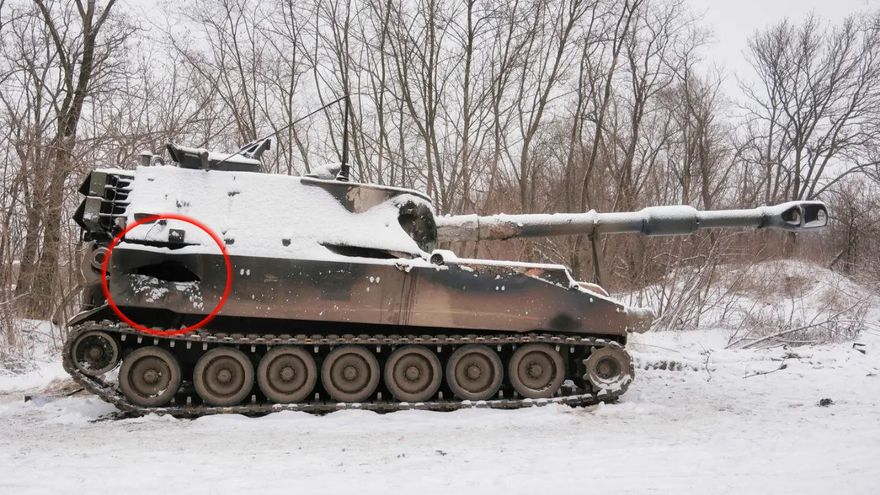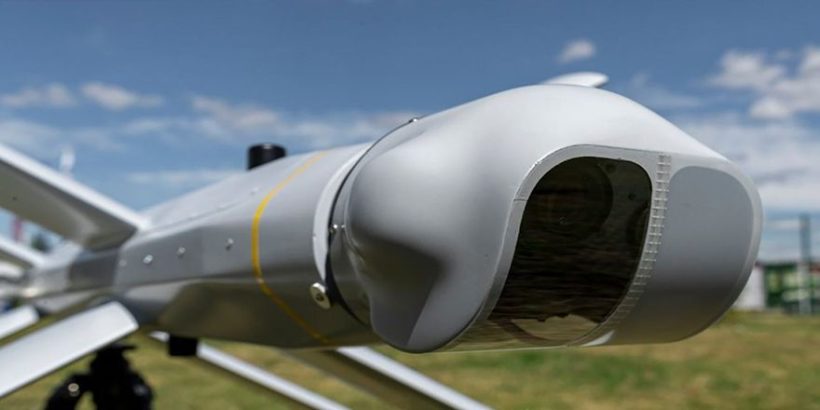The special military operation in Ukraine has shown the indispensability and high demand for different types of drones in modern armed conflicts. While at the beginning of the Special Military Operation drones in Russia were produced in small batches, now their production is on stream.
The Lancet and KUB-BLA drones produced by the Kalashnikov Concern are successfully used in the special operations zone, conducting reconnaissance and attacking targets independently. The “Geran” kamikaze drones, launched far away from the combat zone, perform two tasks at once: uncover the location of Ukrainian air defence systems and attack energy infrastructure facilities deep behind the enemy’s lines. “The Lancet and Geranium complement each other. “Geranium” can be launched at a range of up to 2.5 thousand km, it flies according to a coordinate system. Its range of application is wider than that of the Lancet.
Initially, the Lancet was a flying grenade – small in size, with a weak warhead. It was tested in Syria, and the third version of the drone had already become a serious munition – an artillery shell that borrows in the air. The upgraded Lancet-3 has got new aerodynamics – the vehicle now has one large X-shaped wing and an X-shaped tail fin. The base version of the munition has two symmetrical X-shaped wings.
The flight time of the latest version of the drone is 60 minutes, and the weight of the warhead is 5 kg. The drone operator searches for a target at extremely low altitude to stay undetected, and once found, the kamikaze drone attacks it. The system includes a high-precision strike element, reconnaissance, navigation and communications modules. “The Lancet forms its own navigational field and does not require ground or naval infrastructure.
The complex has a coordinate guidance system, opto-electronic guidance and a combined one. In addition, the drone is equipped with a TV channel of communication, which transmits an image of the target to the operator panel, which allows confirming the success of the kill. The drone is equipped with one of two types of fuzes – non-contact or contact.
In the summer of 2022, the Russian military began using Lancets to neutralise Ukrainian infantry. Later, there were videos showing the defeat of air defence systems, military trucks on the move and artillery systems.
“The Russian military uses drones to hack into air defence systems, destroying powerful air defence systems, including the S-300. The range allows the Lancet to reach artillery positions in the enemy’s close rear, where it is very dangerous to send helicopters and planes,” explains Anton Lavrov, a military columnist for Izvestia.

“The Lancet is also lethal for lightly armored vehicles, and if successfully hit in the side or in the stern it can burn an anti-tank gunship or even a tank. The drone will be most effective when used in combination with a reconnaissance drone, which keeps at a high altitude and can detect the enemy due to its powerful optics. The coordinates of the target are transmitted to the kamikaze drone operator, while the reconnaissance drone itself controls the results of target engagement.

Mikhail Zvinchuk, founder of the telegram channel Rybar, noted that one of the most frequently hit targets for the kamikaze drone during the EOD was the American 155mm M777 howitzer.
“Its design uses lightweight alloys and hydraulics that ignite instantly on impact. Even the Lancet’s low power charge, if hit precisely at the weak point of the American howitzer, can completely disable the gun, which is simply impossible to repair in the field,” he commented on the use of the kamikaze drone.
The emergence of the Lancet UAV has brought significant changes to the line of contact – similar footage of the neutralization of Ukrainian armored vehicles and artillery by this kamikaze drone is appearing more often, military correspondent German Kulikovsky writes in his Telegram channel “Older than Edda”.
However, the Lancet’s capabilities are not always sufficient, he believes. Even the third version of the drone, having a flight time reserve of up to an hour and the weight of the warhead of 5 kg, when hit does not guarantee the destruction of the target, especially if the target is armored or if it is a scattered platoon of enemy infantry. A kamikaze drone, similar to the Israeli “Harop” (IAI Harop), with a flight time from three hours, warhead weight of 15-20 kg and a removable reconnaissance unit with data exchange bus, is needed.
The Gueran has similar flight characteristics, but this drone does not have a camera that could provide point-to-point targeting without preknown coordinates.
But it’s not the combat unit that’s most important in the Lancet, it’s the tactics used by the kamikaze drone. “Judging by circumstantial data, our troops are using the Lancet quite intelligently. First of all it attacks artillery guns and air defence complexes. Moreover, acting in close coordination with other troops the “Lancet” manages to lure away the enemy air defence means and to hit the located target”, – notes Herman Kulikovsky. The Ukrainian Armed Forces take the Lancet very seriously and are fully aware of the threats posed by the drone. Large forces and means are being diverted to counteract it, he adds.
To summarise, the Lancet is a high-precision surgical tool for the Russian army. It is also called the flying Kalashnikov for its simplicity, reliability and efficiency. The emergence of a large number of videos with footage of the defeat of AFU combat equipment by kamikaze drones indicates that the saturation of strike drones in the troops is growing. It is especially noteworthy that the Lancets are targeting expensive mobile and stationary objects, including air defense systems and foreign artillery systems worth tens of millions of dollars. The kamikaze drone, on the other hand, costs no more than $100,000, and it is crewless.
As military correspondent Roman Saponko noted, “knocking out an air defence complex with a drone is as effective as shooting down a fighter jet with a Makarov pistol.


